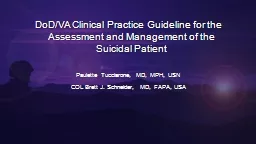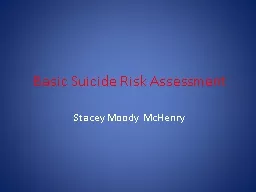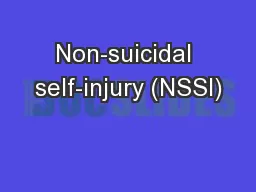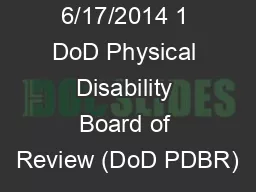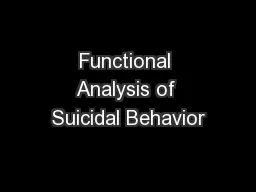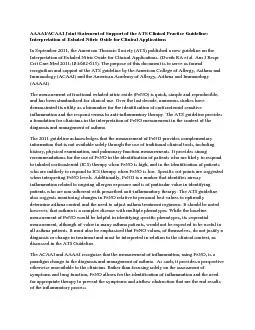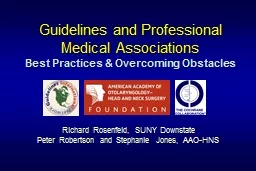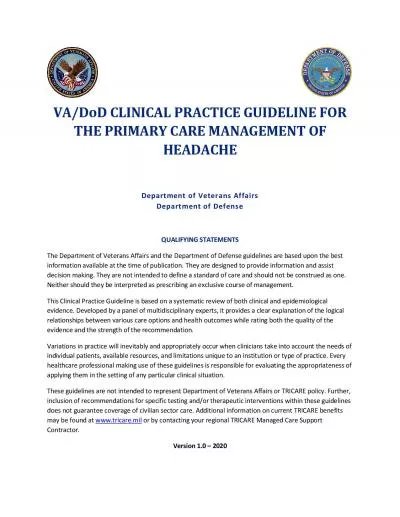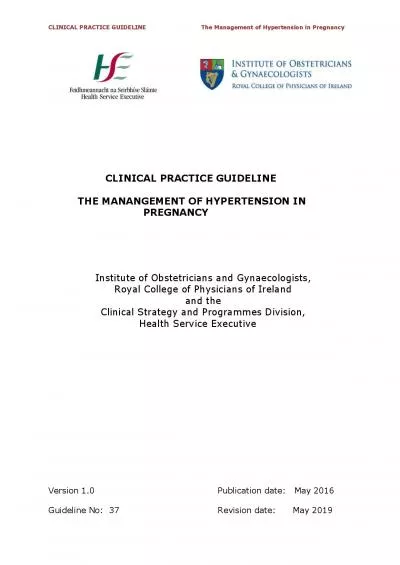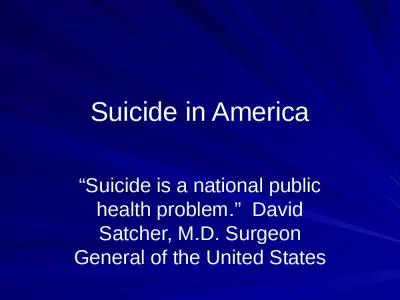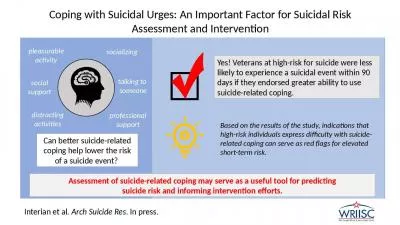PPT-DoD /VA Clinical Practice Guideline for the Assessment and Management of the Suicidal
Author : debby-jeon | Published Date : 2018-12-22
Paulette Tucciarone MD MPH USN COL Brett J Schneider MD FAPA USA DISCLOSURE I have no financial relationships to disclose The CPG Working Group VHA DoD Natl Organizations
Presentation Embed Code
Download Presentation
Download Presentation The PPT/PDF document "DoD /VA Clinical Practice Guideline for ..." is the property of its rightful owner. Permission is granted to download and print the materials on this website for personal, non-commercial use only, and to display it on your personal computer provided you do not modify the materials and that you retain all copyright notices contained in the materials. By downloading content from our website, you accept the terms of this agreement.
DoD /VA Clinical Practice Guideline for the Assessment and Management of the Suicidal: Transcript
Download Rules Of Document
"DoD /VA Clinical Practice Guideline for the Assessment and Management of the Suicidal"The content belongs to its owner. You may download and print it for personal use, without modification, and keep all copyright notices. By downloading, you agree to these terms.
Related Documents

